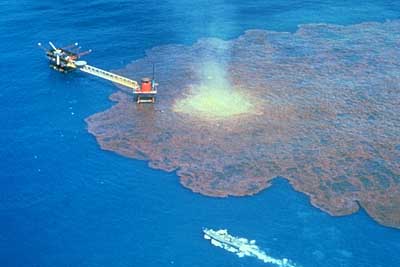***NOTE FROM ANITA: this was worthy of a repost, even though this was written this past summer, this is very important info, please pass it on. There is no new info since this has been written and all of this still applies.
August 5, 2010 by concernedcitizensofflorida
By Dr. Tom Termotto, BCIM, DCAE
THE COMING OF THE BLACK WAVE
Nothing in our shared cultural experience will prepare us better for the oncoming Black Wave throughout the Gulf of Mexico than the Exxon Valdez Oil Spill in Prince William Sound, Alaska. And yet even this environmental catastrophe falls far short of what is coming around the corner in the Gulf. Alaska is not Florida, or Louisiana, or Texas. The Deep South summer here in Tallahassee, FL has been as hot and humid as any we’ve seen. This weather pattern is what will distinguish the BP Gulf Oil Spill from the Exxon Valdez just as the total volume of the spill and use of dispersants have.
The relentless cycle of low pressure systems throughout the Gulf of Mexico during the summer season is instrumental in keeping the many toxic vapors close to the surface of the Gulf, as well as the many coastal communities that rim her. We are not only talking about petroleum VOC’s (volatile organic compounds) and the dispersant chemicals found in COREXIT and the hovering methane gas concentrations. We are also talking about the inevitable interactions and synergies among these chemical contaminants that produce much more powerful combinations, especially when they co-exist in such a conducive environment as the Gulf of Mexico hot and humid stewpot.
These realities in the water, and in the air, ought to be known by anyone participating in cleanup and recovery operations anywhere in the Gulf. To ignore them is to do so at great peril. The water has been polluted to a degree never seen on such a grand scale in US Territorial Waters. There simply is no precedent here. The Caspian Sea in Asia is a known petrochemical cesspool, which is so dead that all the bordering nations have given up on her and mercilessly plunder her depths for oil. How far behind is the Gulf of Mexico in the wake of this spill. If you value your health, you ought not to eat seafood from the Gulf. If you value your health, you ought not to swim in the Gulf? If you value the health of your children, sensitive and delicate as they are during their formative stages, the affected Gulf Coast beaches are no longer a safe and healthy place on which to walk. Nor is wading in the water a safe practice until we know its true status.
The Black Wave of which we speak has many more aspects than the ones we have been hearing about in the mainstream media. There are dimensions that none have ever dared to whisper because it would mean the end of the Oil & Gas Industry for good. There are also phases of progression and retrogression of any oil spill, which will occur over the unique lifetime of this BP Gulf Oil Spill. As Mother Nature employs the tincture of time, Her ever so loyal elements will inexorably serve to heal all that requires healing on land, in the waters, and within the littoral regions to include the marshes, wetlands and estuaries. However, the process of healing will take time … perhaps a long time.

Question:
What do you get when you mix
oil & methane gas,
with oil dispersant (COREXIT),
with radioactive effluent,
with surface-burning oil slicks (petroleum+dispersant),
with lots of dead marine life of every sort and kind
in the Gulf of Mexico during a hot and humid summer?
Answer:
A toxic petrochemical stew which is neither safe to eat from, nor swim in. The affected beaches, wetlands, marshes and estuaries should also be viewed with great caution, or avoided altogether.
MORE AT THIS LINK:
http://worldwellnesssymposium.wordpress.com/2010/08/05/environmental-and-health-impacts-of-the-bp-gulf-oil-spill/
No comments:
Post a Comment